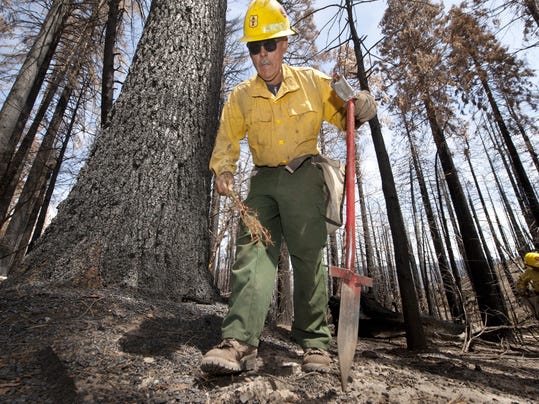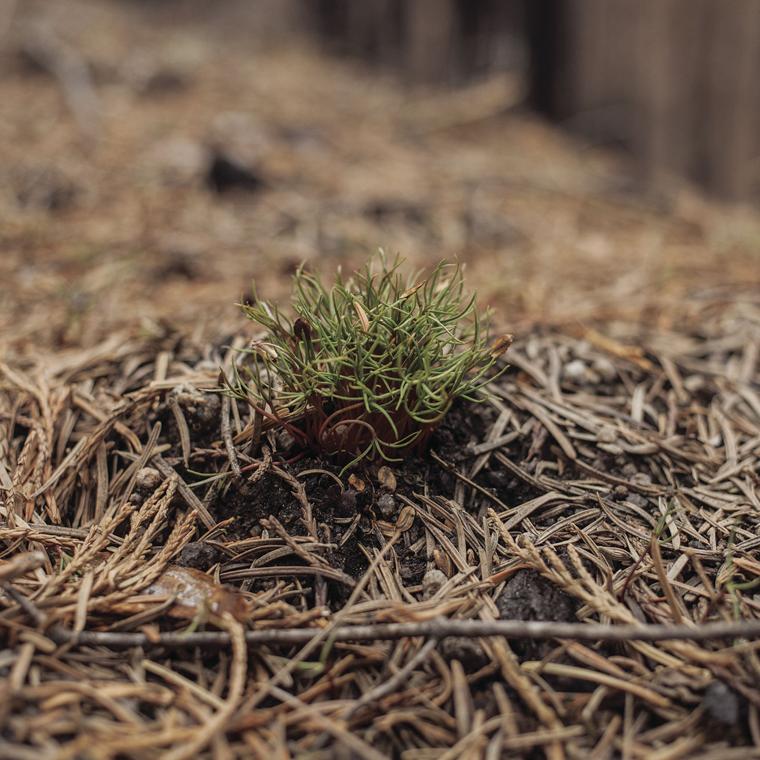New life emerging from the Rough Fire
Posted: Sun May 01, 2016 7:50 am
New life emerging from the Rough Fire
David Castellon 7:13 p.m. PDT April 29, 2016
http://www.thecalifornian.com/story/new ... /83735014/
Though the skies over the northern end of the Sequoia National Forest are no longer filled with smoke blocking the sun and irritating eyes and lungs, there are many stark reminders of what happened last summer.
An outlook off Highway 180 in the forest that once offered a breathtaking view of the Mill Creek Flat Basin in Sequoia National Park now offers a view that’s breathtaking for a different reason – scorched earth interspersed with black trees that, from a distance, resemble burnt match sticks, bereft of their needles or leaves.
Miles to the west, hillsides similarly scorched gray and black show the path of last year’s Rough Fire and where the flames stopped, just about a quarter-mile from Hume Lake, along with the buildings and resorts near it.
“It’s heartbreaking,” said Alicia Embrey, a Forest Service spokeswoman serving as a tour guide last week.
She showed where Highway 180 has been reopened since the fire and some badly burned areas in the national forest that may stay closed for months or years over concerns that trees killed by the fire could fall and hurt visitors.
The Rough Fire started with a lightning strike on July 31 in the neighboring Sequoia National Forest and burned for 99 days before it was fully contained in early November.
In that time, it burned through 151,623 acres, mostly in the Sequoia and Sierra national forests, and in parts of Kings Canyon National Park. The fire prompted the evacuation of Grant Grove Visitors Center due to the fire threat and heavy smoke – making it California’s largest wildfire in 2015. Dry conditions from the state’s ongoing drought didn’t help.
And drought still is having detrimental effects on Sequoia and Sierra forests, where areas that didn’t burn are filled with a growing number of dead and dying trees due to the lack of water and invasive bark beetles taking advantage of the water-starved and weakened trees.
Amid all this devastation is something surprising – life.
Even in areas where fires burned hot enough to scorch tree roots, new growth is emerging in patches on the ash-covered ground. And even in areas where flames tore through forests, some islands of still-living tees and brush can be found.
“Wildlife can be very adaptive to wildfire events. Like yesterday, we were in the middle of the Rough Fire [burn area] and saw a bear,” said Teresa Benson, district Ranger for the Hume Lake Ranger District in the Sequoia forest. She said other species are coming back to the area, too, including hawks nesting in scorched, dead trees.
And then there’s the new life being brought in by Arturo Castro, and his crew of nine fellow forest technicians, who three weeks ago began planting ankle-high seedlings in some of the most damaged portions of the Sequoia National Forest.
He said the crews planted 60 acres in just five days on steep slopes along the Mill Creek Flat Drainage, near the northern border of the Sequoia forest.
The sugar and Ponderosa pine seedlings they’re planting are among the 50,000 the Forest Service is starting with to repopulate trees destroyed in the fire.
Many of those dead trees were 160- to 190-feet tall, and the seedlings that survive and grow to fuller sizes likely will not reach those heights for 40 to 60 years, Castro estimated.
Forest Service officials used $24,000 from their 2015-16 fiscal year budget to buy the seedlings, with a plan to plant them only in areas where the Rough Fire was so intense that they destroyed seeds. New trees wouldn’t grow in these areas any time in the near future without help.
And if the trees don’t come back, Manzanita shrubs could grow in the forests unchecked “and take over the area.”
“It’s going to be 40, 50 years before you see a tree naturally growing in that area,” Embrey said.
The Rough Fire burned about 88,000 acres in the northern part of...
[ read more... ]

